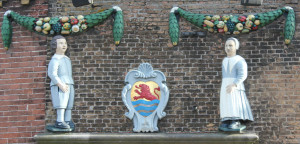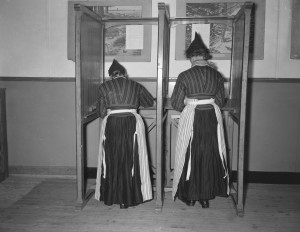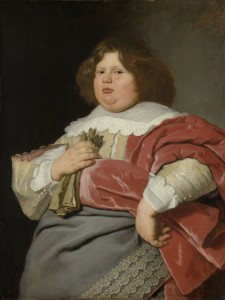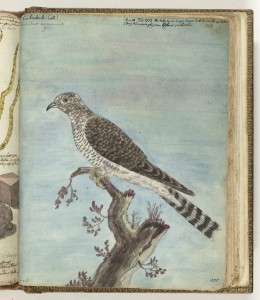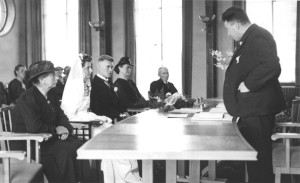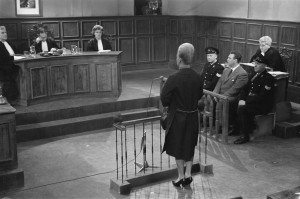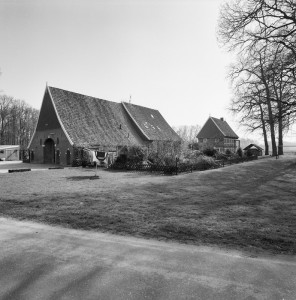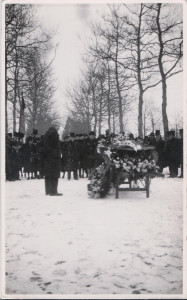A wees is an orphan. Sometimes you will see the term halfwees [half orphan] or volle wees [full orphan] to refer to a child who lost one or both parents, respectively. While the term wees is nowadays used for a child who lost both parents, in earlier times it could be used for a child who lost one parent. You will see references like "Jan, orphan child of Maria de Wit, assisted by his father Cornelis van Vleuten." Before 1811, some parts of the country had a weeskamer [orphan chamber] that … [Read more...]
Dutch term – Kiesrecht
Kiesrecht means suffrage, the right to vote in political elections. In the Netherlands, the first democratic elections were held in 1795, but only a men owning property over a certain value were allowed to vote. It wasn't until 1917 that the right to vote was granted to all men, and women followed two years later. Voter registration records of these first universal elections have survived for several places and can be found in municipal or regional archives. … [Read more...]
Dutch term – Drost
A drost or drossaard was a sheriff, someone who governed a region or town on behalf of the landlord. Some drosten required their subjects to provide special services to him, like feed his horse or do chores twice a year. These were sometimes called drostendiensten (sheriff's services). These services were a relict of feudal regulation in the Middle Ages and were abolished after the French occupation in 1795. … [Read more...]
Dutch term – Koekoeksgraad
I first heard the word Koekoeksgraad last week and liked it so much that I wanted to share it with you. Koekoeksgraad means "degree of cuckoos," the degree of non-paternity events per generation. I first heard the term in a presentation by forensic DNA expert Maarten Larmuseau, in a Youtube recording of his presentation about using Y-chromosomes to calculate the percentage of "cuckoos," children whose biological father doesn't match the documented line. Their research found that both … [Read more...]
Dutch term – Schoonmoeder
A schoonmoeder is a mother-in-law. In older documents, the term is also sometimes used for stepmother (another type of mother-by-marriage). … [Read more...]
Dutch term – Akte van Bekendheid
An akte van bekendheid is a record of knowledge, usually a statement by four witnesses who all testify about the truth of something. For example, when people got married after 1811, they had to submit extracts of their birth records and sometimes also extracts of the death records of their parents, former spouses and even grandparents (in the case of under-age orphans). In some cases, these records did not exist and could not be extracted. If they could not produce these records, they drummed … [Read more...]
Dutch term – Horige
A horige is a serf or villain, an un-free farmer who was bound to the land. Serfdom started in the Middle Ages. In most parts of the Netherlands, it was abolished by the 1500s. In some parts, like the eastern parts of Drenthe, Overijssel and Gelderland, a diluted form of serfdom continued until the French occupation of 1795. Rights and duties of serfs The specific rights and duties of a serf depended on the overlord, time and place, but in general, serfs have the following features in … [Read more...]
Dutch Term – Stamreeks
A stamreeks is a pedigree that follows just one line of ancestors, usually the male line. In most cases, this will trace the last name. Other variations trace the female line only, or follow the last name even if it is descended from a woman (in the case of an illegitimate child or farm name). A stamreeks can be in a narrative format or in chart form. … [Read more...]
Dutch term – Graf
A graf is a grave. In the Netherlands today, burials take place in special cemeteries, often at the outskirts of towns. Before 1827, most people would have been buried in or around the church. Read how graves are routinely cleared after several decades, and check out these Dutch alternatives to Find a Grave to see if your ancestors' graves survive. … [Read more...]
Dutch term – Aanzegger
An aanzegger is a person who goes to inform neighbors and friends that someone has died. Traditionally, aanzeggen was done by a close neighbor, but in some regions it became custom to hire someone for the task. … [Read more...]
